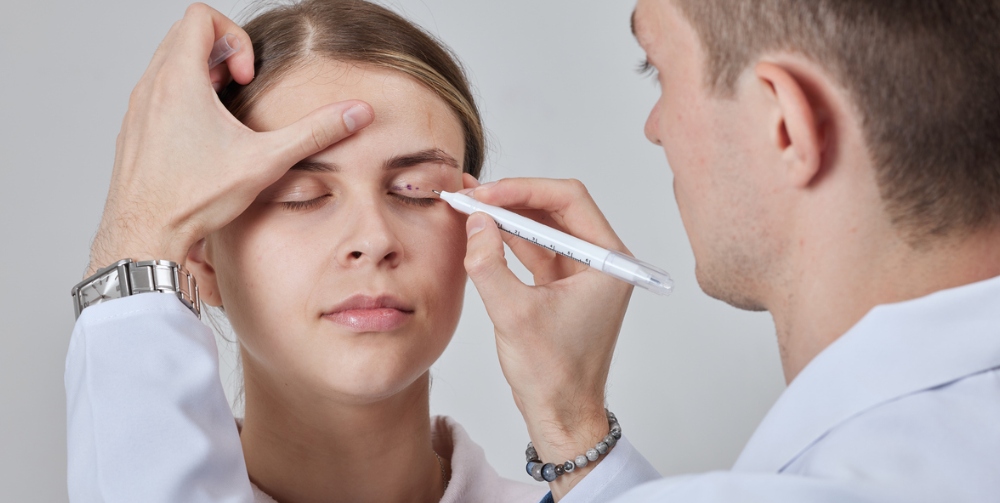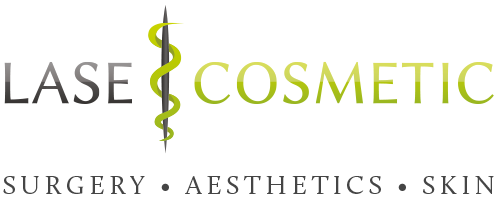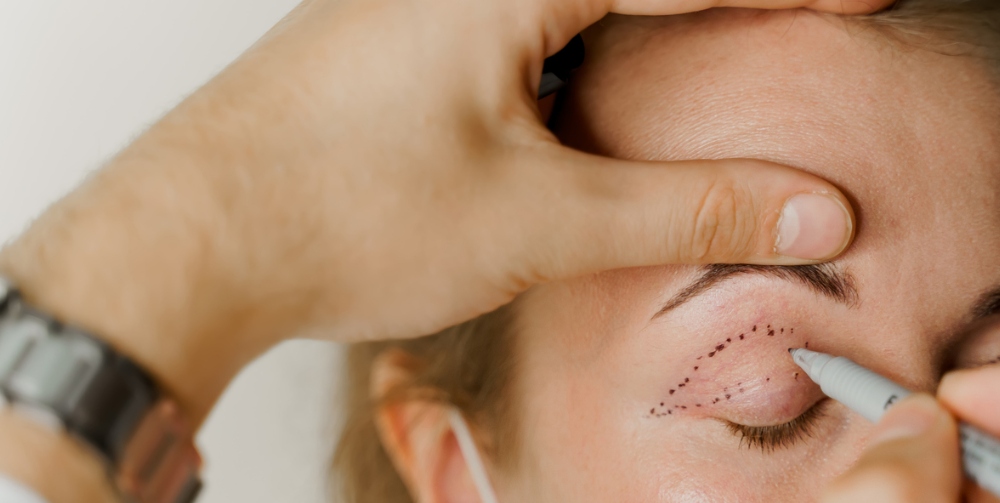If you’re stuck between lower vs upper blepharoplasty, or you’re unsure what the difference is between the two procedures, then keep reading this blog.
With over 40 years of experience in surgical and non-surgical procedures, we help clients achieve their desired look so they can feel their most confident self.
Lower and upper blepharoplasty are popular surgical treatments that can help with a whole range of aesthetic and medical concerns. But how do you choose which one is right for you?
In this blog post, we’ll be discussing:
- The difference between lower blepharoplasty and upper blepharoplasty
- The benefits of both procedures
- Before and after results
- Typical healing process and recovery
Let’s get started.
What Is the Difference Between Lower Blepharoplasty and Upper Blepharoplasty?
The main difference between upper blepharoplasty and lower blepharoplasty is the area of the eye being targeted.
Upper blepharoplasty focusses on your upper eyelid with the aim of removing any drooping or sagging skin. This often happens with age so a key benefit of upper blepharoplasty is that it can make you look more youthful.
In contrast, lower blepharoplasty concentrates on the area underneath your eye, so the eye bags as they’re more commonly known. A surgeon will remove the extra skin and may tighten the underlying muscles or reposition fat to create a smoother, more refreshed appearance.
With both of these procedures, it’s important to choose a qualified surgeon who you can discuss your desired outcome with. As everyone is different, the results will vary depending on different factors so choosing a surgeon with knowledge and experience in the field is key.
What Are the Benefits of Lower Blepharoplasty and Upper Blepharoplasty?
There are lots of benefits to lower and upper blepharoplasty depending on the look you want to achieve. Some people undergo both of these treatments to achieve a more complete eye rejuvenation.
This will be discussed with your surgeon but it’s not uncommon. Let’s explore the benefits in more detail below.
A more youthful appearance
Both upper and lower blepharoplasty can lead to a more youthful, brighter appearance by removing excess skin and making it smoother.
If we start by looking at upper blepharoplasty, by removing excess upper eyelid skin that causes sagging, it makes your eyes appear wider and more awake. This also means when you apply any makeup to your eyes it will go on much smoother as you won’t have the same fine lines and wrinkles which make your eyes look creased.
Moving onto lower blepharoplasty, by treating dark circles and stubborn eye bags underneath your eye, it can make you look more youthful. Your surgeon will work to reduce any puffiness and reposition or remove excess fat to create a smoother under-eye area. The result is a refreshed appearance with a more defined contour beneath the eyes.
Clearer vision
One of the key benefits of upper blepharoplasty is clearer vision. As we age, excess skin on the upper eyelids can sometimes sag, even covering part of the eye.
This can obstruct your vision, making simple tasks such as reading, driving, and using digital screens more difficult.
By removing excess skin and tightening the eyelid area, upper blepharoplasty helps restore a full field of vision, reducing any discomfort. Patients also often notice that their eyes feel less heavy and tired throughout the day. Beyond the practical improvements, this procedure also provides a refreshed, more awake appearance.
In contrast, lower eyelid surgery usually results in little visual alterations.

Need Help Deciding Which Treatment Is Right For You?
Book your consultation with our experts here.
Improved facial symmetry
Blepharoplasty plays an important role in improving facial symmetry. Uneven eyelids, sagging skin, or prominent under-eye bags can create an imbalanced look, making one side of the face look different from the other.
However by lifting the upper lids or smoothing the lower eye area, blepharoplasty helps create a more balanced appearance.
This subtle yet effective change improves natural beauty by making the eyes look more proportional to the rest of the face. Improved symmetry can also have a psychological impact, increasing your self confidence as patients feel their features appear more even, youthful, and refreshed.
Lower and Upper Blepharoplasty Before and After
The photos below show the results of lower blepharoplasty and upper blepharoplasty before and after treatment.
This gives you an idea of the results you can expect, however please note that the outcome will differ for each individual.
Can You Combine Lower and Upper Blepharoplasty?
Many patients choose to combine lower and upper blepharoplasty for a more complete eye rejuvenation as you’re tackling the whole area.
Often, the upper and lower eyelids show signs of ageing at the same time, including drooping skin, puffiness, and fine lines. This means treating both areas simultaneously can create a more balanced and brighter appearance.
It also means you’ll have a single recovery period (something we’re explaining in more detail below) rather than having to undergo two separate procedures. In turn, this means less downtime making it a convenient choice for people looking to refresh their whole eye area at once.
However, as always, the different options will be discussed in detail with your surgeon. You might only need one of the procedures to achieve your desired look, and in that scenario, having both would be unnecessary. That’s why choosing a qualified surgeon is crucial as a one-to-one consultation can help determine the best approach for your needs.
What Is the Recovery Process Like?
Recovery from eyelid surgery is typically straightforward, with most people resuming normal activities within 7 to 10 days.
Below is a breakdown of what the recovery process usually looks like:
1. Immediately after surgery (1-2 Days)
- Swelling, bruising, and mild discomfort around the eyes are common.
- Your vision may be slightly blurry due to ointment or temporary swelling.
- Apply cold compresses and keep your head elevated to reduce swelling.
- Your surgeon may prescribe pain relief and antibiotic eye ointment to support healing and prevent infection.
2. First week
- Swelling and bruising usually peak around days 2-3, then start to improve.
- Dryness, excessive tearing, and light sensitivity may occur.
- Avoid strenuous activity, bending over, or heavy lifting to minimise pressure and swelling.
- If you have non-dissolvable stitches, they’re typically removed between days 5 and 7.
3. Weeks 2-4
- Bruising and swelling continue to fade, and your eyes will look more refreshed.
- Most people feel comfortable returning to work and social activities after 7-10 days.
- Makeup can help conceal any lingering bruising.
- Sunglasses are recommended to protect your eyes from sunlight and wind.
4. Long-term healing (1-3 Months)
- Final results gradually become more visible as residual swelling settles.
- Scars will continue to fade over the coming months, blending into the natural contours of your eyelids.
- Maintaining a healthy lifestyle and skincare routine can help prolong your results.

Lower and Upper Blepharoplasty FAQs
Below are some common lower and upper blepharoplasty FAQs helping you understand the treatments a little better.
How much is eyelid surgery?
The cost of eyelid surgery varies depending on which clinic you attend and which surgeon you use. At LASE, eye reshaping surgery starts from £2950 but a consultation is necessary to determine the best course of treatment.
Who is suitable for lower and upper blepharoplasty surgery?
You’re suitable for blepharoplasty if you have droopy eyelids, puffiness, or excess skin around the eyes, either for cosmetic reasons or because it’s affecting your vision. Ideal candidates are in good health, have realistic expectations, don’t smoke (or are willing to quit), and don’t have chronic eye conditions that could affect healing.
How long do the results of eyelid surgery last?
While eyelid surgery offers long-lasting results, it isn’t totally permanent due to natural ageing. Upper eyelid surgery usually lasts several years, though some sagging may return over time. Lower eyelid surgery often provides more permanent results, especially when fat is removed or repositioned, with puffiness rarely returning unless influenced by genetics or lifestyle.
Lower Blepharoplasty vs Upper Blepharoplasty: Which Procedure Do You Need?
If you’re confused about lower vs upper blepharoplasty, or you’re unsure which treatment is best, hopefully this blog post has helped.
As we’ve discussed, you don’t always need to choose one or the other as sometimes, both treatments work best simultaneously. However, doing your research and choosing a qualified surgeon is the best approach as they can work out the right plan for you.
Any surgical treatment is a big decision and you want to feel as though you’re in safe hands. At LASE cosmetics we have over 40 years of experience in surgical and non-surgical treatments, and we work with clients to help them look and feel their best. Every client has a one-to-one consultation where we determine the best course of action so that you can achieve your desired look.
Get in touch with our friendly team and start your journey with us today!


Recent Comments